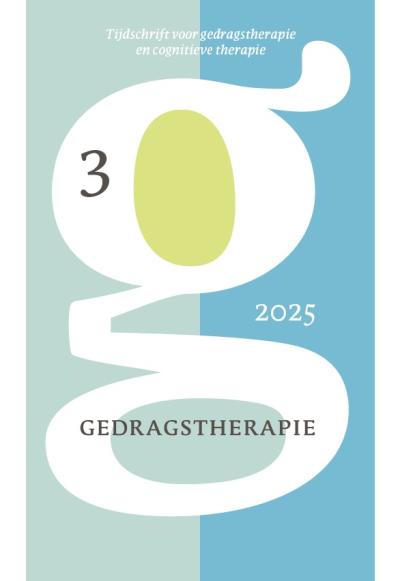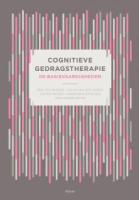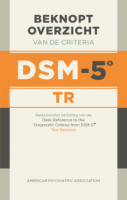Inhoud
Interpersoonlijke processen in sociale angststoornis
Samenvatting
Patiënten met een sociale angststoornis vrezen het negatieve oordeel van anderen. Het blijkt dat deze patiënten om zichzelf te beschermen voor dit negatieve oordeel zich in een sociale situatie zo gaan gedragen dat zij dit het gevreesde negatieve oordeel ook oproepen. Zo worden hun negatieve gedachten over zichzelf gevoed. Het lijkt dat verminderd open zijn, dat wil zeggen het delen van persoonlijke informatie met anderen, belangrijk is in het uitlokken van dit negatieve oordeel van anderen. Dit gedrag kan vanuit het cognitieve gedragsmodel goed begrepen worden als een vorm van veiligheidsgedrag. Gedragsexperimenten waarbij expliciet open gedrag gestimuleerd wordt zouden deze groep patiënten kunnen helpen de negatieve interpersoonlijke processen die de angst in stand houden te doorbreken.
Literatuur
- Alden, L.E., & Bieling, P. (1998). Interpersonal consequences of the pursuit of safety. Behaviour Research and Therapy, 36, 53-64.
- Alden, L.E., & Taylor, C.T. (2004). Interpersonal processes in social phobia. Clinical Psychology Review, 24, 857-882.
- Alden, L.E., & Taylor, C.T. (2011). Relational treatment strategies increase social approach behaviors in patients with generalized social anxiety disorder. Journal of Anxiety Disorders, 25, 309-318.
- Alden, L.E., & Wallace, S.T. (1995). Social phobia and social appraisal in successful and unsuccessful social interactions. Behaviour Research and Therapy, 33, 497-505.
- Altman, I., & Taylor, D.A. (1973). Social penetration: The development of interpersonal relationships. Oxford, England: Holt, Rinehart & Winston.
- American Psychiatric Association (2000). Diagnostic and statistical manual of mental disorders, fourth edition, text revision (DSM-IV-TR). Washington, DC: American Psychiatric Association.
- Baker, S.R., & Edelmann, R.J. (2002). Is social phobia related to lack of social skills? Duration of skill-related behaviours and ratings of behavioural adequacy. British Journal of Clinical Psychology, 41, 243-257.
- Baumeister, R. F., & Leary, M.R. (1995). The need to belong: Desire for interpersonal attachments as a fundamental human motivation. Psychological Bulletin, 117, 497-529.
- Beck, J.G., Davila, J., Farrow, S., & Grant, D. (2006). When the heat is on: Romantic partner responses influence distress in socially anxious women. Behaviour Research and Therapy, 44, 737-748.
- Bijl, R.V., van Zessen, G., & Ravelli, A. (1997). Psychiatrische morbiditeit onder volwassenen in Nederland: het NEMESIS-onderzoek. II. Prevalentie van psychiatrische stoornissen. Nederlands tijdschrift voor geneeskunde, 141, 2453-2460.
- Blöte, A.W., Kint, M.J.W., & Westenberg, P.M. (2007). Peer behavior toward socially anxious adolescents: Classroom observations. Behaviour Research and Therapy, 45, 2773 -2779.
- Clark, D.L., & Miller, L.C. (1994). Self-disclosure and liking: A meta-analytic review. Psychological Bulletin, 116, 457-475.
- Creed, A.T., & Funder, D.C. (1998). Social anxiety: From the inside and outside. Personality and Individual Differences, 25, 19-33.
- Cuming, S., & Rapee, R.M. (2010). Social anxiety and self-protective communication style in close relationships. Behaviour Research and Therapy, 48, 87-96. doi: 10.1016/j. brat.2009.09.010
- Cuming, S., Rapee, R.M., Kemp, N., Abbott, M.J., Peters, L., & Gaston, J.E. (2009). A selfreport measure of subtle avoidance and safety behaviors relevant to social anxiety: Development and psychometric properties. Journal of Anxiety Disorders, 23, 879883.
- Curtis, R.C., & Miller, K. (1986). Believing another likes or dislikes you: Behaviors making the beliefs come true. Journal of Personality and Social Psychology, 51, 284-290.
- Davila, J., & Beck, J.G. (2002). Is social anxiety associated with impairment in close relationships? A preliminary investigation. Behavior Therapy, 33, 427-446.
- Fehm, L., Pelissolo, A., Furmark, T., & Wittchen, H.-U. (2005). Size and burden of social phobia in Europe. European Neuropsychopharmacology, 15, 453-462.
- Hirsch, C.R., & Clark, D.M. (2004). Information-processing bias in social phobia. Clinical Psychology Review, 24, 799-825.
- Hofmann, S.G. (2007). Cognitive factors that maintain social anxiety disorder: A com prehensive model and its treatment implications. Cognitive Behaviour Therapy, 36, 193-209.
- Jourard, S.M. (1971). Self-disclosure: An experimental analysis of the transparent self. New York: Wiley-Interscience
- Kessler, R.C. (2003). The impairments caused by social phobia in the general population: Implications for intervention. Acta Psychiatrica Scandinavica, 108 (Suppl 417), 19-27.
- Kessler, R.C., Berglund, P., Demler, O., Jin, R., & Walters, E.E. (2005). Lifetime Prevalence and Age-of-Onset Distributions of DSM-IV Disorders in the National Comorbidity Survey Replication. Archives of General Psychiatry, 62, 593-602.
- Lamers, F., Oppen, P. van, Cornijs, H.C., Smit, J.H., Spinhoven, P., Balkom, A.J.L.M. van, Nolen, W.A., Zitman, F.G., Beekman, A.T.F., Penninx, B.W.J.H. (2011). Comorbidity patterns of anxiety and depressive disorders in a large cohort study. Journal of Clinical Psychiatry, 72, 341-348.
- Meleshko, K.G., & Alden, L.E. (1993). Anxiety and self-disclosure: Toward a motivational model. Journal of Personality and Social Psychology, 64, 1000-1009.
- Mulkens, S., & Bögels, S.M. (2011). Protocollaire behandeling van patiënten met een sociale angststoornis: Taakconcentratietraining en cognitieve therapie. In G. P. J. Keijsers, A. Van Minnen & C. A. L. Hoogduin (Eds.), Protocollaire behandelingen in de ambulante geestelijke gezondheidszorg. Amsterdam: Boom.
- Pilkonis, P.A. (1977). The behavioral consequences of shyness. Journal of Personality, 45, 596-611.
- Rapee, R.M., & Heimberg, R.G. (1997). A cognitive-behavioral model of anxiety in social phobia. Behaviour Research and Therapy, 35, 741-756.
- Rapee, R.M., & Lim, L. (1992). Discrepancy between self- and observer ratings of performance in social phobics. Journal of Abnormal Psychology, 101, 728-731.
- Scholing, A., & Emmelkamp, P.M.G. (1995). Sociale fobie. Houten: Bohn Stafleu van Loghum.
 © 2009-2025 Uitgeverij Boom Amsterdam
© 2009-2025 Uitgeverij Boom Amsterdam
De artikelen uit de (online)tijdschriften van Uitgeverij Boom zijn auteursrechtelijk beschermd. U kunt er natuurlijk uit citeren (voorzien van een bronvermelding) maar voor reproductie in welke vorm dan ook moet toestemming aan de uitgever worden gevraagd:
Behoudens de in of krachtens de Auteurswet van 1912 gestelde uitzonderingen mag niets uit deze uitgave worden verveelvoudigd, opgeslagen in een geautomatiseerd gegevensbestand, of openbaar gemaakt, in enige vorm of op enige wijze, hetzij elektronisch, mechanisch door fotokopieën, opnamen of enig andere manier, zonder voorafgaande schriftelijke toestemming van de uitgever.
Voor zover het maken van kopieën uit deze uitgave is toegestaan op grond van artikelen 16h t/m 16m Auteurswet 1912 jo. Besluit van 27 november 2002, Stb 575, dient men de daarvoor wettelijk verschuldigde vergoeding te voldoen aan de Stichting Reprorecht te Hoofddorp (postbus 3060, 2130 KB, www.reprorecht.nl) of contact op te nemen met de uitgever voor het treffen van een rechtstreekse regeling in de zin van art. 16l, vijfde lid, Auteurswet 1912.
Voor het overnemen van gedeelte(n) uit deze uitgave in bloemlezingen, readers en andere compilatiewerken (artikel 16, Auteurswet 1912) kan men zich wenden tot de Stichting PRO (Stichting Publicatie- en Reproductierechten, postbus 3060, 2130 KB Hoofddorp, www.cedar.nl/pro).
No part of this book may be reproduced in any way whatsoever without the written permission of the publisher.
Inloggen VGCt en VVGT
Leden van de VGCt en de VVGT loggen in via de site van hun vereniging. Als u op die site bent ingelogd als lid, vindt u daar een button naar het Tijdschrift voor Gedragstherapie.
English
Behavioral Therapy: Journal for Behavioral Therapy and Cognitive Therapy ISSN 0167-7454
Information in English can be found here.







